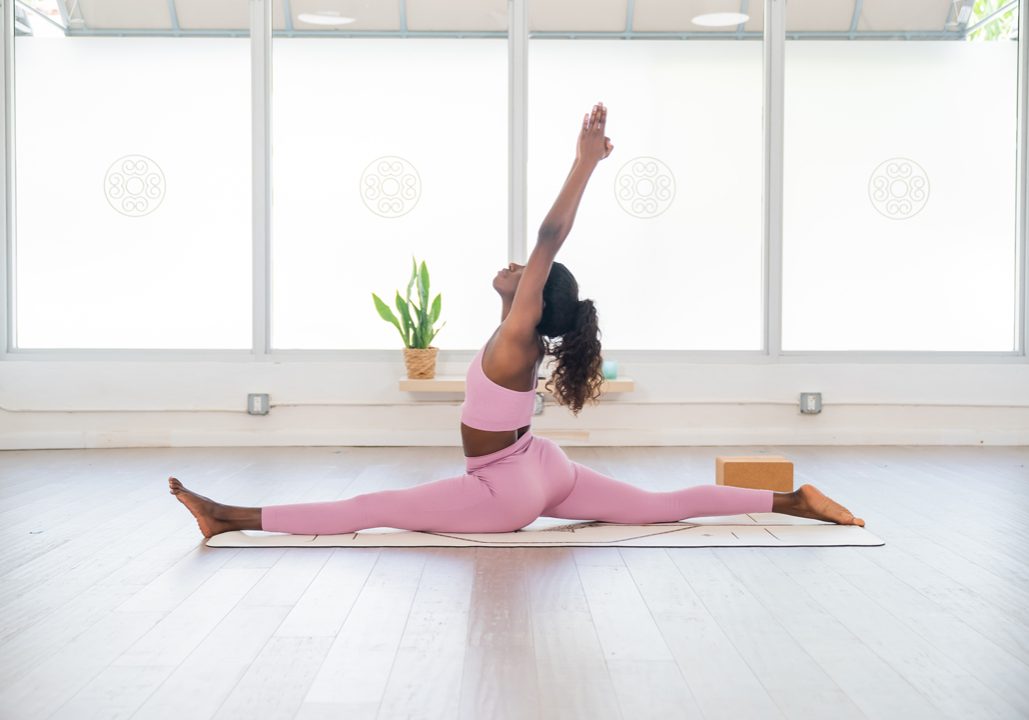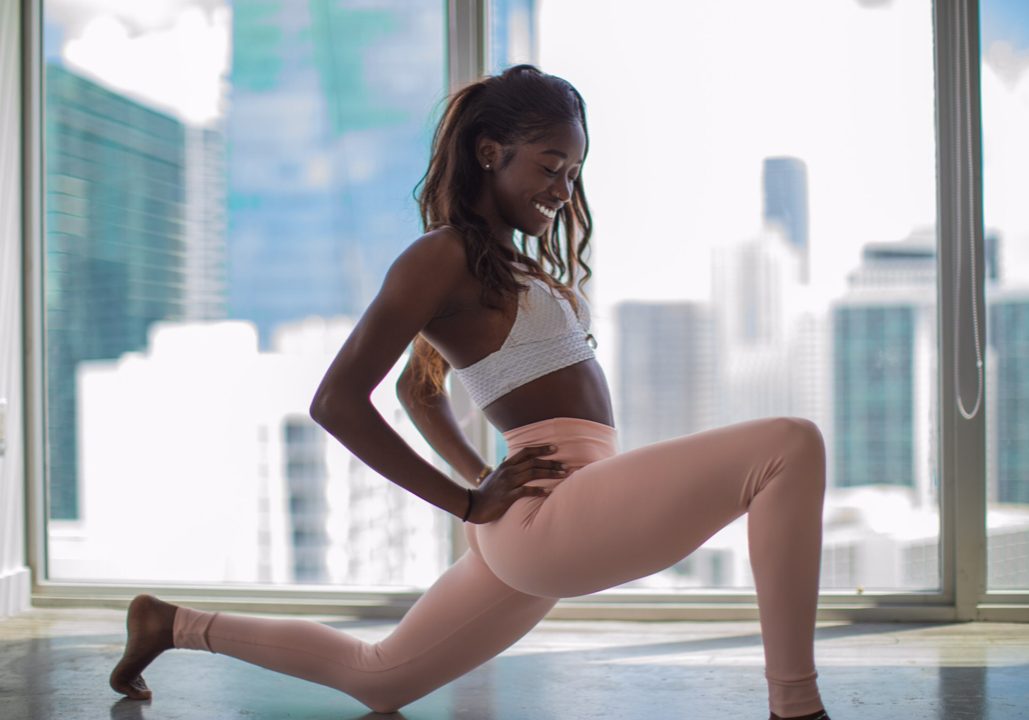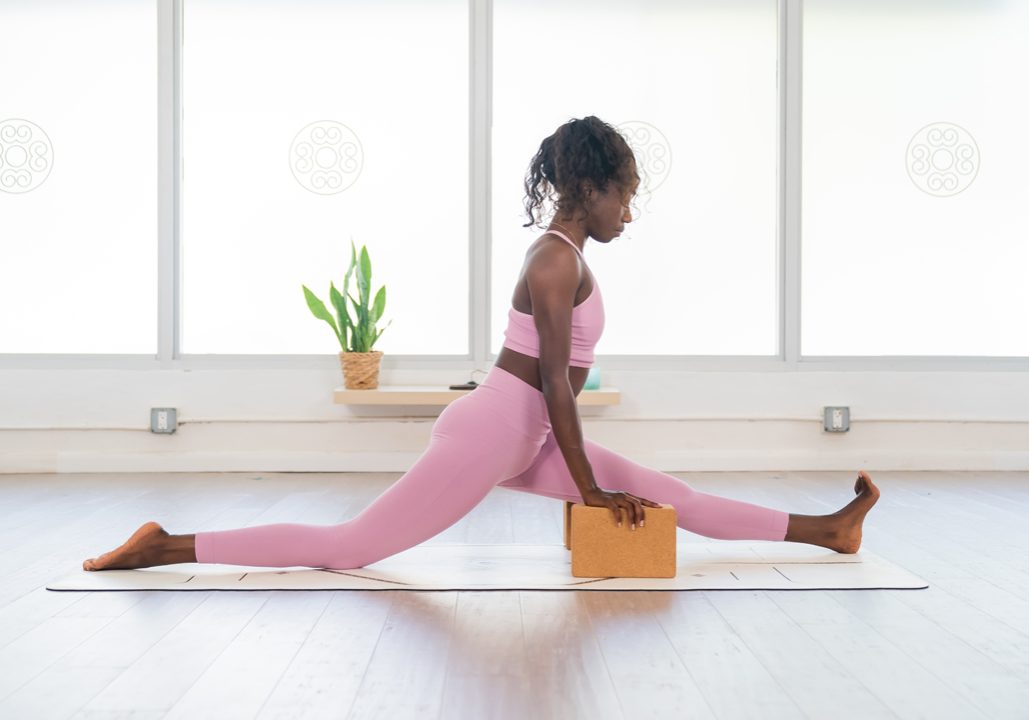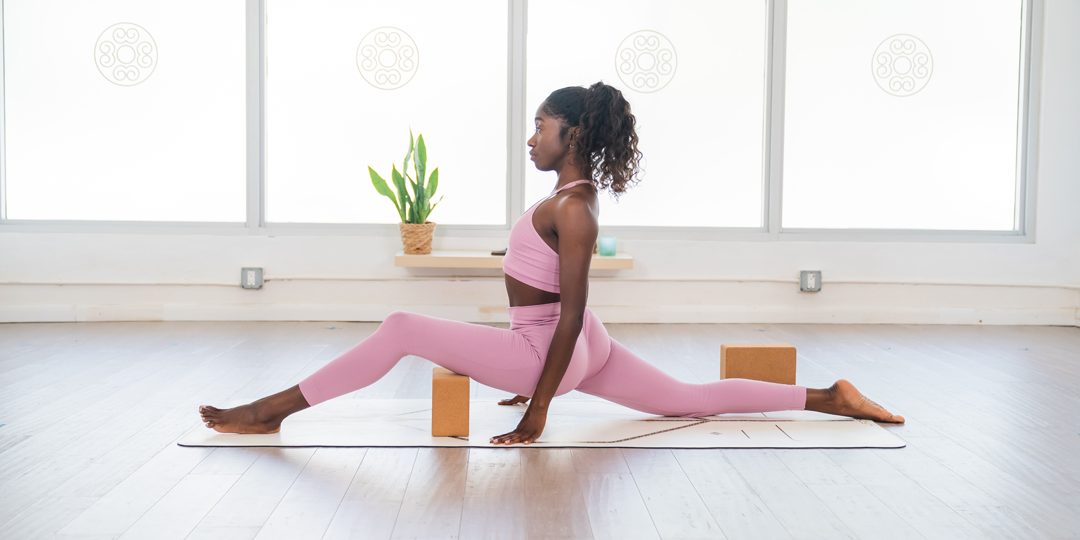
Hanumanasana yoga pose tutorial — with Elizabeth Richardson
Splits pose* is definitely one of the most exciting postures to progress into during your yoga journey — not to mention an absolutely liberating hip release. Here, we will go through some of the fundamentals as far as alignment is concerned to help your body open up correctly to this pose, taking in the benefits and finding new ways to explore. By Elizabeth Richardson

Hanumanasana Pose
Hanumanasana at the beginning of your yoga journey can feel like an impossibly high hurdle (go slow, go easy, go gentle!). However, the more you sit into the posture, the more your body will begin to make the neurological connection to the undiscovered muscles in the hips and hamstrings that make this deep asana possible.
It’s said that we store emotions in our hips. So, as you sit in the building postures for this pose, such as pigeon or even frog, keep in mind as you breathe into any resistance you are letting go of unnecessary tension that’s not only holding you back from the posture but accepting circumstances in your life that are out of control.
Make this connection: as you create space and release resistance, you are creating space in all aspects of your life to grow.
Breaking it down, the pronunciation:
What’s Hanuman you ask? Hanuman was a Hindu god, who has one of the most incredible and inspirational stories of all time. I distinctly remember hearing part of it in a two-hour intensive Vinyasa and crying! But that’s for another time! Hanuman is the symbol of strength and energy, the embodiment of the karma yogi (devoted to the work). As challenging as this pose may seem for beginners, we cultivate the energy of humans dedicating ourselves to the work.

Hips and quads
Come to a downward-facing dog, with a gentle bend in your knees so you can get a good idea of how open your hamstrings may feel. Just gently bend one leg, straightening the other, breathing into whatever resistance you may feel.
Start to lift your right leg up, keeping the hip closed and flexing the right foot to the mat. Slowly start to bend the right knee and stack the hips. As you lift your knee higher to the sky, ground down in the left heel. This should feel like a big stretch in both the right hip and left hamstring.
Slowly start to step the right foot in between the hands and come to your first pose, Anjaneyasana or low lunge. You can deepen this pose by taking your hands to the mat or even bending the left knee and trying to catch the left foot to create space in the left quad. Find gentle movement in the shape. Just be gentle with yourself as you deepen your breath.

Hamstrings
From your low lunge shape, you can move into half hanumanasana or half-split pose. From your lunge pose, start to bend into your left knee as you straighten your right leg. Here, you can place a block underneath your hands inside of the right leg. To get deeper, you can begin to turn out the right flexed toes to the right side of the room. This should feel interesting in the achilles and right calf. Explore this shape changing the block at each level as you breathe into any resistance.
The three components of Hanumanasana:
1. Hips are squared forward
2. Gentle bend to protect the knee of the leading leg
3. Elongating the spine
Let’s see if we can put those three pieces together. Staying on the right side, rock your weight back into your leading leg (right). Place a block at the medium level underneath in-between the start of the hamstring and the right glute. Start to straighten your left leg behind you until your weight is resting predominantly on the block. Slowly adjust your right leg, straightening as much as you can within your limits. Keep melting into the left hip, keeping both hips pointing forward. You can curl under the left toes to keep hips in place. Take three breaths in this posture and slowly, resting your weight onto your hands, move out of the posture.

The most common mistakes in this pose are:
- Resting all of the body weight into the hip of the leading leg.
- Resting the weight on the inside of the left knee as opposed to the left knee facing completely face down to the mat with weight distributed evenly in the left and quad and right hamstring.
These could be harmful for your knee joints. Do not cheat yourself of the benefits proper alignment offers in this pose, which include:
- Deep opening in the hamstrings, stimulation of the abdominal organs and even releasing of grief and other emotional tension stored in the hips.
- As you sit into your full hanumanasana, you may notice sensations in the low back or lumbar spine. This is likely from the psoas muscle that connects from the lower spine to the inner thighs. You can create more space by lifting out of the chest, reaching the arms above the head. This may also take some of the stress of the hips. It’s a win, win!
Counter Poses
Option A: Child’s Pose
After taking these steps to splits on both sides, I like to counter pose with an easy child’s pose, knees together, arms at both sides.
Option B: Baddha Konasana
After taking these steps to splits on both sides, you can counter pose with Baddha Konasana. Sitting nice and tall or lying on your back, bring the soles of your feet to touch, letting gravity sink the knees to the ground, breathing into the hips as the hamstrings recover from the previous release.
* Note: please seek the guidance of a professional teacher before attempting this pose if you are new to yoga, or a qualified medical professional if you have any injuries.
Elizabeth Richardson is a retired dancer, active meditator and passionate yogi. Find her at: sheiswildflower.com
Watch the video





